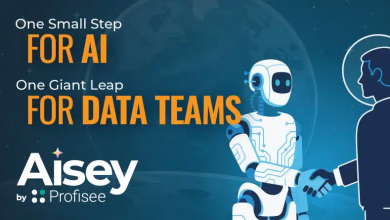Air India Leverages AI to Become a Global Leader in Aviation
Dr. Satya Ramaswamy, Chief Digital and Technology Officer at Air India, emphasizes the importance of generative AI and data in their strategy to transform Air India into a leading airline.
 Air India, India’s flagship airline under the Tata Group since 2022, is undergoing a five-year transformation to modernize its operations and reclaim global leadership.
Air India, India’s flagship airline under the Tata Group since 2022, is undergoing a five-year transformation to modernize its operations and reclaim global leadership.
Previously hampered by outdated technology and fleet, the airline has migrated all workloads—including its new website—to Microsoft Azure.
This shift supports a surge in passengers (doubled since early 2022) while prioritizing customer-centric experiences.
As Chief Digital and Technology Officer Dr. Satya Ramaswamy notes, “Customers are the very center of our existence… Happy customers are loyal customers.”
“We are on this mission of building a world-class airline with an Indian heart. To accomplish that goal, we are becoming an AI-infused company, and our collaboration with Microsoft is making that happen.”
Through collaboration with Microsoft, Air India is embedding AI across its operations.
Challenges
The airline faced escalating passenger expectations and a rapidly expanding user base, requiring seamless, accurate customer service without inflating costs. Its legacy virtual assistant relied on obsolete tech, struggling to deliver reliable responses across millions of interactions. With traffic doubling, maintaining service quality while controlling call volumes and agent workload was critical.
Solution
Air India deployed AI.g, a generative AI-powered virtual assistant built on Azure OpenAI Service using GPT models for advanced natural language processing. Key components include:
- Azure AI Content Safety to filter harmful content.
- Retrieval Augmented Generation (RAG) with Azure AI Search for precise, context-aware responses integrated with enterprise systems.
- Multimodal capabilities via Azure AI Speech and Azure AI Vision for features like visa/passport scanning, baggage tracking, and voice analysis in contact centers.
- Scalable backend: Azure Cosmos DB, Azure SQL Database, Azure Database for PostgreSQL, and Azure Databricks for data handling; Azure App Service and Azure API Management for secure microservices deployment.
Launched in May 2023, AI.g covers 1,300 topics (e.g., bookings, flight status) and was developed with Microsoft’s technical support. Head of Digital Architecture Viju Chacko highlights, “When OpenAI models were offered on Azure, we didn’t have a second thought… The support from Microsoft has been amazing.”
Results
- Handled nearly 4 million queries, automating 97% and escalating only 3% to agents.
- Processes ~30,000 questions daily (including ~10,000 via AI.g), keeping call volumes steady at ~9,000 despite doubled traffic.
- Saved several million dollars annually in operational costs without adding agents.
- Zero inappropriate responses over 1.5+ years, ensuring safety and trust.
- Enhanced personalization and efficiency, freeing agents for complex needs. Ramaswamy adds, “Customer convenience and the ability to get things accomplished more quickly and accurate is why customers prefer to interact with AI.g.”
Future Plans
Air India plans to expand AI for crew training, pilot efficiency, and contact center automation (e.g., AI-assisted data entry during calls). The goal: Achieve 30% market share as a “world-class airline with an Indian heart,” fully AI-infused through ongoing Microsoft partnership.



